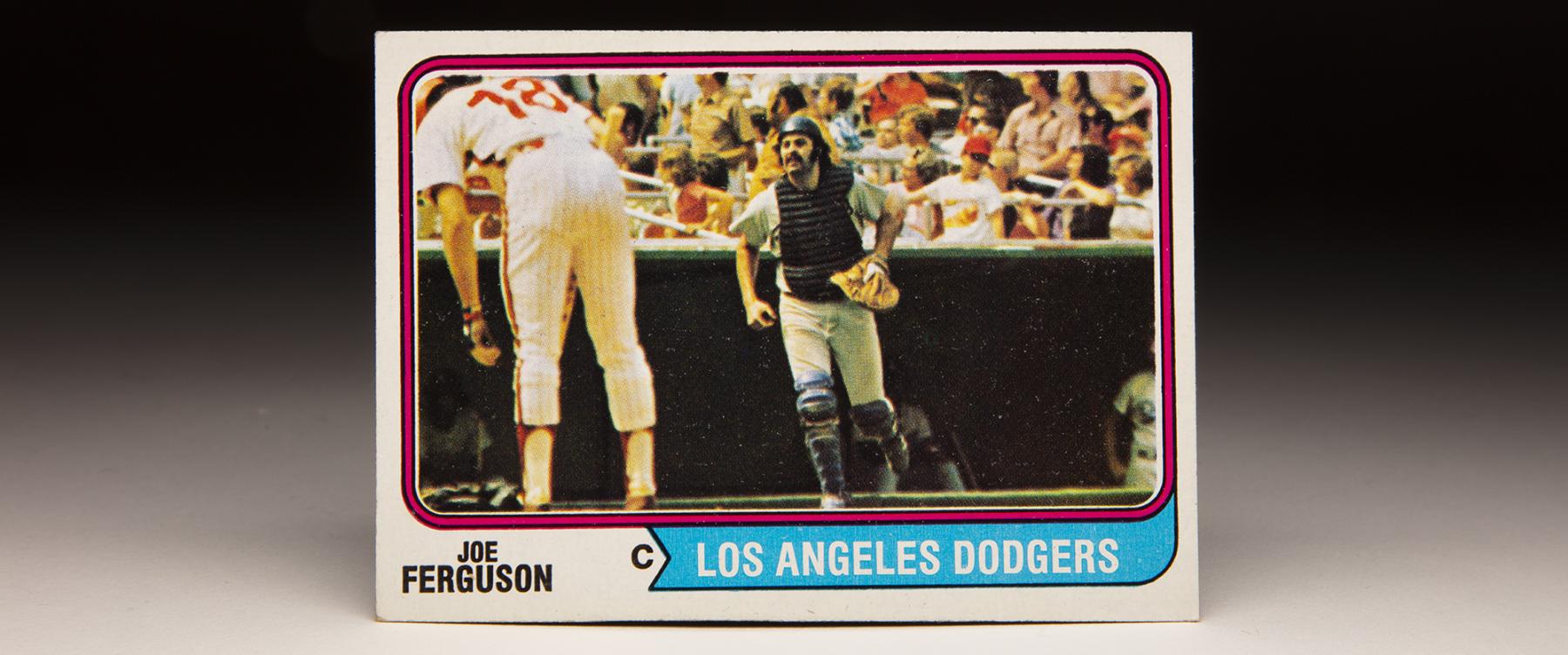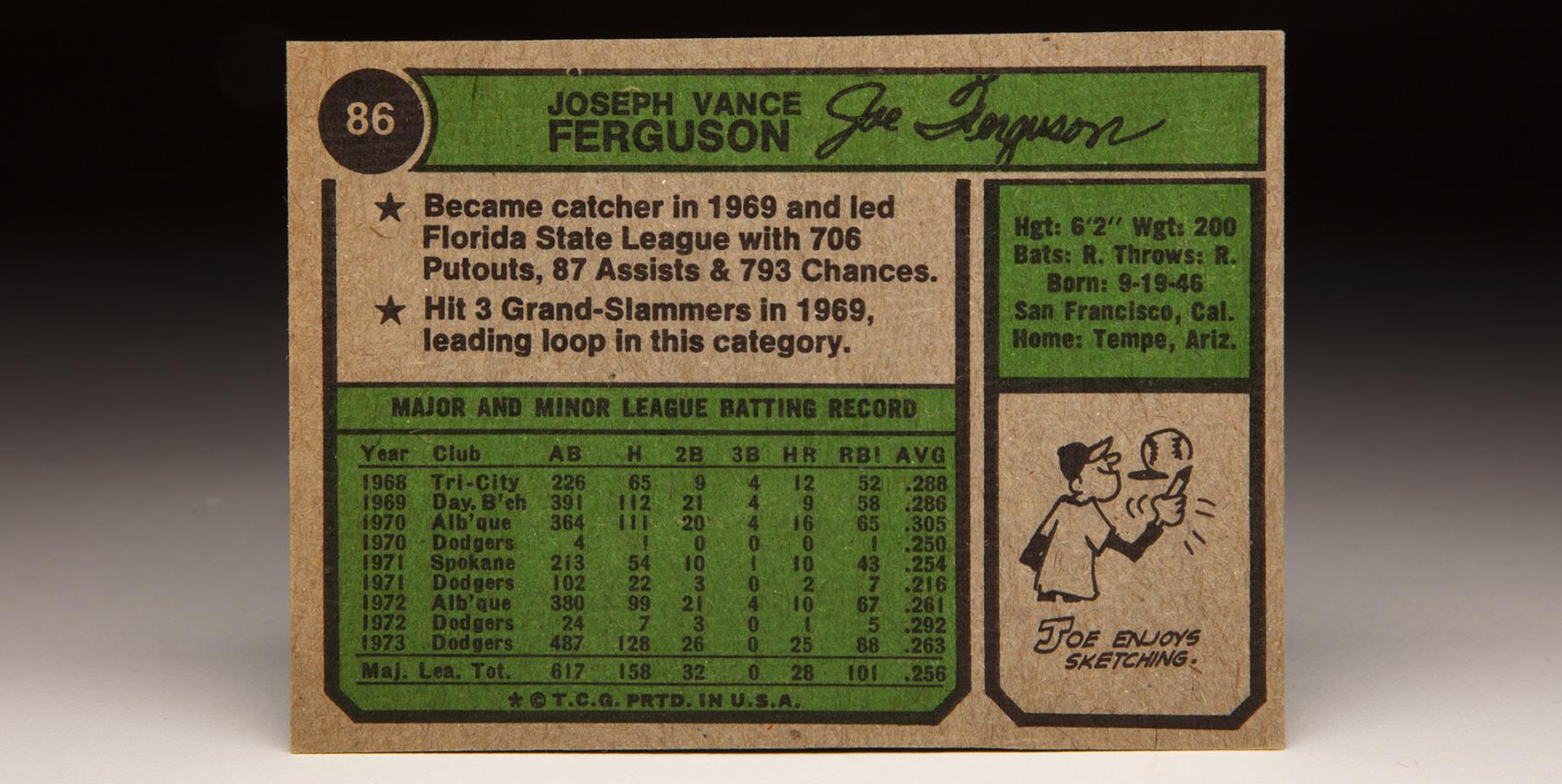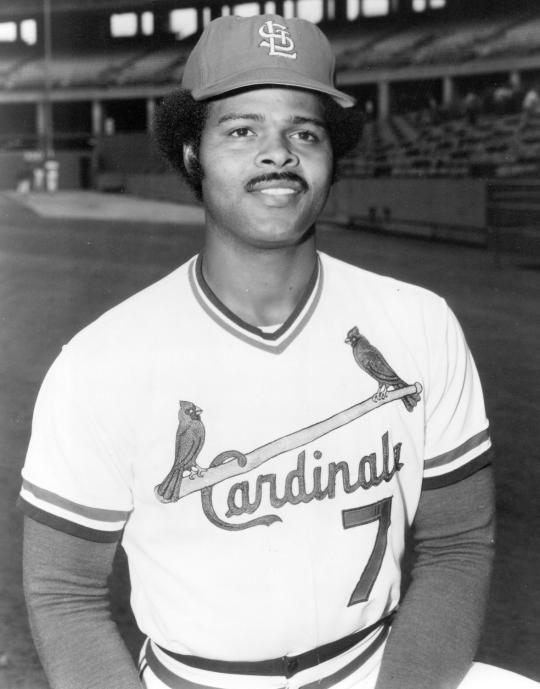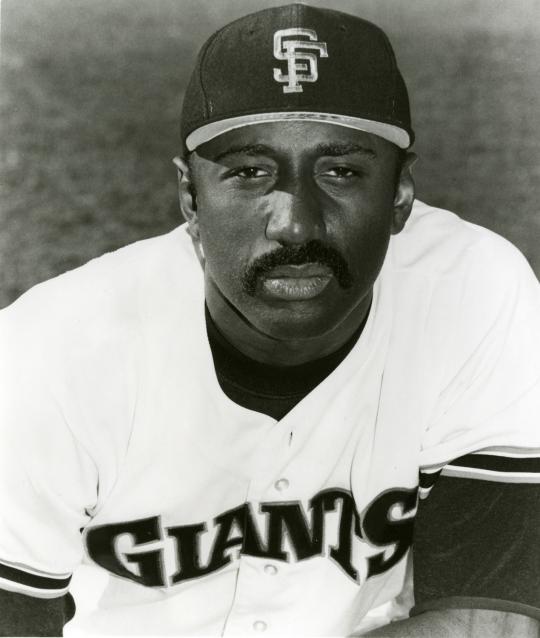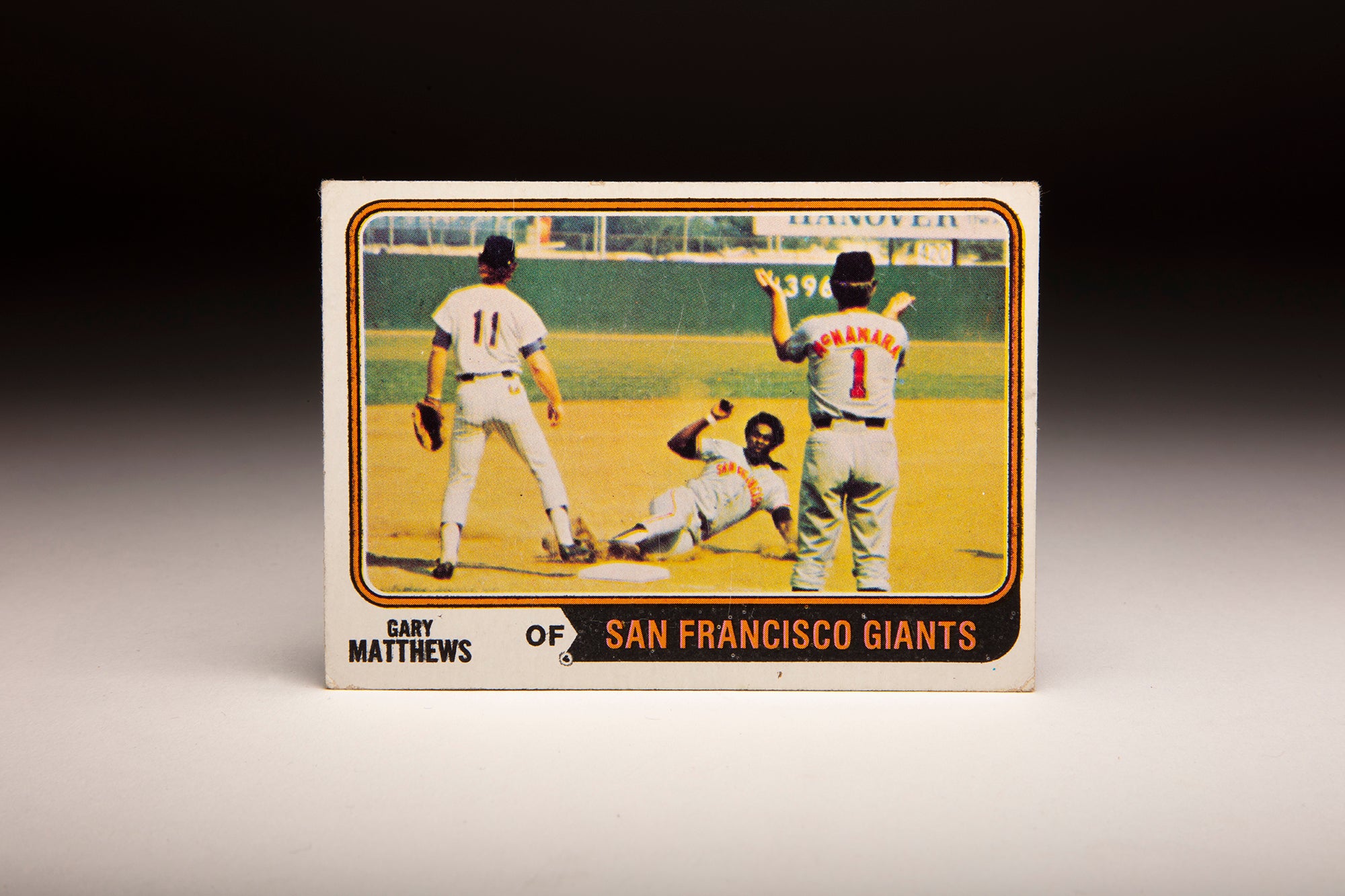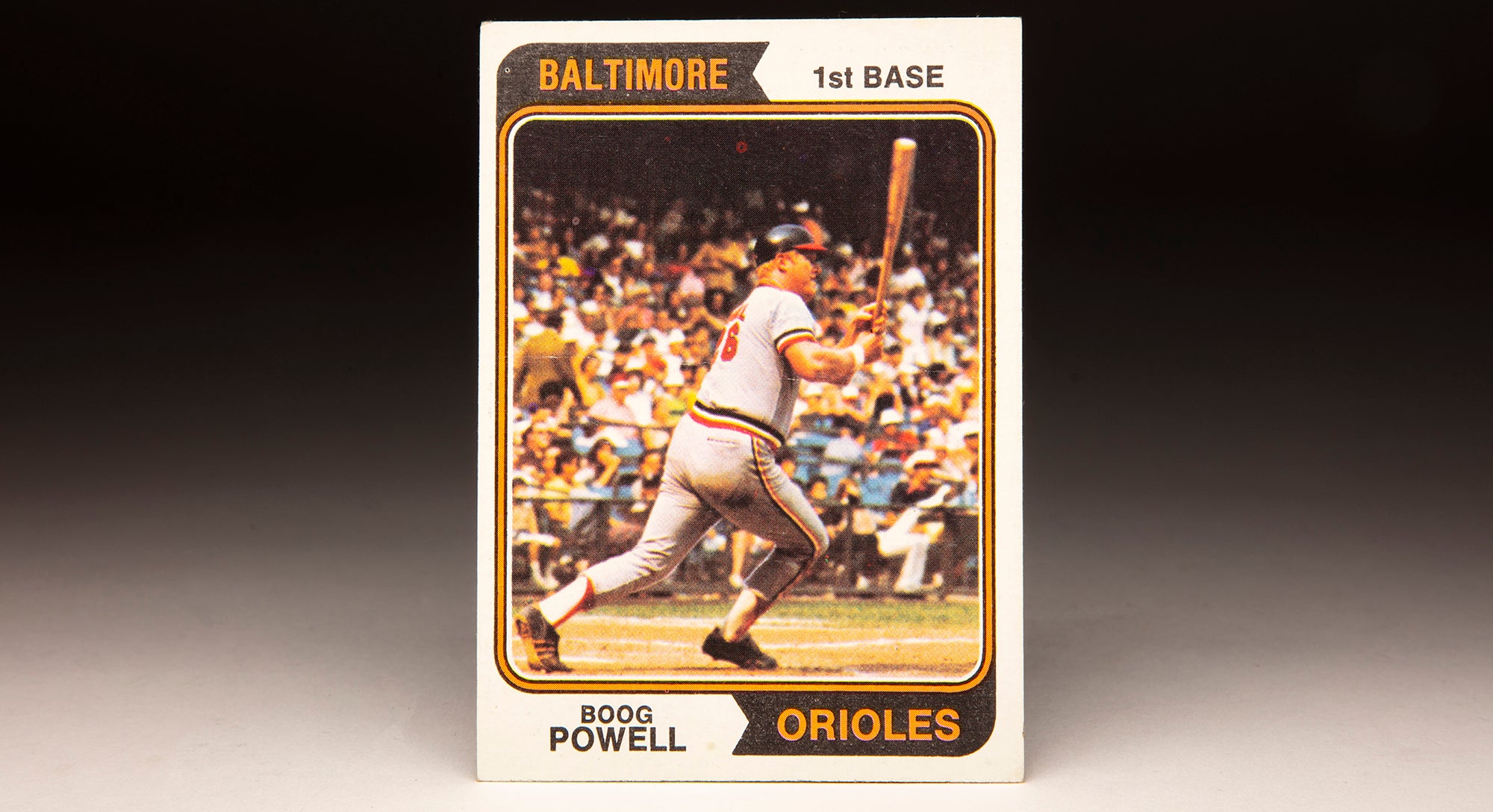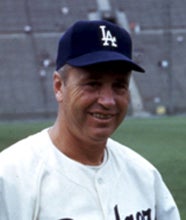- Home
- Our Stories
- #CardCorner: 1974 Topps Joe Ferguson
#CardCorner: 1974 Topps Joe Ferguson
Hall of Fame staffers are also baseball fans and love to share their stories. Here is a fan's perspective from Cooperstown.
When you’re a young fan of sports, there are so many opportunities for confusion. For me, it was my inability to keep straight common names that happened to be shared by athletes in two different sports.
One of the first examples for me occurred in the early 1970s, when Jim Hart was wrapping up his career with the New York Yankees and Jim Hart was playing quarterback for the NFL’s St. Louis Cardinals. (And that team name created even more confusion; why was there a St. Louis Cardinals team in both baseball and football?) Clearly, it was not the same Jim Hart playing both sports; one was white and the other was African American. And at times, the big league outfielder was referred to as Jim Ray Hart, while the NFL quarterback was simply known as Jim Hart.
Hall of Fame Membership
There is no simpler, and more essential, way to demonstrate your support than to sign on as a Museum Member.
A more confusing situation involved the dual Joe Fergusons of the mid-1970s. One was an above-average quarterback whom the NFL’s Buffalo Bills drafted in 1973. Durable and capable of making the deep throw, Ferguson was a pretty good quarterback, good enough to tie Fran Tarkenton for the NFL lead in touchdown passes in 1975. Then again, he also had the luxury of being able to hand the ball off to O.J. Simpson and an underrated fullback named Jim Braxton.
The other Ferguson, the lesser known of the two players, was a catcher for the Los Angeles Dodgers and a few other teams during the course of the 1970s and early 80s. Both of the Fergusons happened to be Caucasian, and both went by the first name of Joe, so it was a bit more difficult to distinguish between the two. I think I was smart enough to realize that they were two different people, but my memory is a bit sketchy, so I could be wrong about that.
As a follower of both baseball and football, I became familiar with both of the Joe Fergusons, but my love of baseball made the catcher more of a known entity. That Joe Ferguson had several characteristics that made him memorable. For one, he not only wore a helmet when he caught, but also at times when he played the outfield. Second, he owned one of the most powerful outfield throwing arms I’ve ever seen, even though the outfield was not his position of preference. And third, he had the kind of physique that indicated an affinity for spending some time at the food spread after each game.
The word “burly” comes to mind when thinking about Ferguson. His 1974 Topps card provides ample evidence. Making his way out of the dugout after what appears to be an unsuccessful chase of a foul ball, Ferguson looks a bit like a cross between a lumberjack and a heavyweight boxer. As sportswriter Ross Newhan, the 2000 J.G. Taylor Spink Award winner, once said of Ferguson: his “back is that of a blacksmith.” Ferguson just looks big across the board, including his mustache, his eyebrows, and even his hair, which is barely contained underneath his helmet.
Ferguson’s 1974 Topps card also provides some intrigue because of the presence of another player on the card. We see a member of the Philadelphia Phillies in the foreground; he is wearing the Phillies’ home pinstriped uniform, evidence that the photograph was taken during a game at Veteran Stadium in Philadelphia. Although he is bending over to pick up a bat and is facing the opposite direction from the camera, his number is plainly evident: No. 18. A check of the Phillies’ playing roster reveals No. 18 to be Craig Robinson, a utility infielder who played shortstop and second base that season. Robinson weighed only 165 pounds, roughly 50 pounds less than Ferguson.
Upon first inspection, Ferguson doesn’t look particularly athletic or graceful. That runs in contrast to his physique in high school and college, when he was thin enough to play point guard at the University of the Pacific, a team that advanced to the NCAA regionals. The Dodgers selected him in the eighth round of the 1968 draft, an indication that they considered him a prospect, but not a blue chipper.
Almost immediately, Ferguson elevated his status within the Dodgers’ system. Assigned to Tri-City of the Northwest League, the rookie outfielder belted 12 home runs in 70 games, slugged .522 and accrued a batting average of .288.
The Dodgers bumped Ferguson up to the Florida State League in 1969, while also changing his position. Tommy Lasorda, a minor league manager at the time, felt that Ferguson would help both himself and the organization by switching positions.
“The organization was in need of catchers,” Lasorda would tell the Sporting News a few years later. “Here was a guy with a tremendous arm and the hands of a basketball player.”
On the strength of the Lasorda recommendation, the Dodgers made the switch, but the transition took some time. Ferguson committed 24 errors, mostly on throws, and allowed a whopping 44 passed balls. Offensively, he put up similar numbers to what he had done in the Northwest League, but perhaps most impressive was his batting eye. He drew 82 walks while striking out only 70 times.
Given his discipline and his power at the plate, the Dodgers felt that Ferguson was more than capable of moving up to Double-A Albuquerque in 1970. Ferguson put up a well-rounded offensive season: 16 home runs, 66 walks and a .305 batting average. Even more impressively, he made major strides as a catcher. In 100 games, he committed only eight errors. He also reduced his total of passed balls to 12, a far more respectable number.
Duly impressed by both his catching improvements and his continued lusty hitting, the Dodgers rewarded Ferguson with a late-season call-up to Los Angeles. Seeking a young catcher to take over the job from veterans Tom Haller and Jeff Torborg, the Dodgers gave him a three-game cameo in September.
The Dodgers might have been tempted to anoint Ferguson as their starting catcher in 1971, but they hedged their bets by acquiring veteran Duke Sims in a trade with the Cleveland Indians. So Ferguson reported to Spokane for his first taste of Triple-A ball. In June, the Dodgers called him back to LA and used him as a backup to the lefty-swinging Sims. Given sporadic playing time, Ferguson batted only .216, but impressed with his overall catching and throwing.
On paper, Ferguson appeared to be in line for an increased role in 1972, but that didn’t happen. The Dodgers opted for two veterans with strong defensive reputations, first bringing in Chris Cannizzaro and then acquiring Dick Dietz. Those acquisitions, along with the emergence of fellow catching prospect Steve Yeager, resulted in Ferguson returning to Triple-A to start the new season. He remained there until late September, when the Dodgers finally called him up and gave him eight starts behind the plate to close out the season. Ferguson handled himself well, batting .292 with an OPS of .888 in the late-season trial.
After the season, the Dodgers released Cannizzaro, but brought Dietz to Spring Training in 1973 to compete with Ferguson for the catching job. Fergie won the competition, resulting in Dietz’ release in late March. By now, Ferguson had added significant weight to his previously thin frame, giving him the look that we see on his Topps card. More importantly, he completely justified the Dodgers’ decision to reward him with the starting catching position. Playing in 136 games, he hit 25 home runs, drew 87 walks and accumulated an OPS of .839. When he didn’t catch, he filled in as a right fielder and left fielder, giving manager Walter Alston the chance to use the more defensive-minded Yeager on occasion.
Ferguson didn’t much care for playing the outfield; catching had become his preference. When he played in the outfield, he sometimes wore his helmet, perhaps an indication of his uncertainty over catching fly balls. He once lost two fly balls in the sun during a game in San Diego, making his head an easy target for a ball dropping out of the sky.
Alston continued to use Ferguson as a combination catcher/outfielder in 1974. Ferguson put together a good season, one that saw him hit 15 home runs and draw 75 walks, helping the Dodgers win the National League West on the way to a league pennant. That fall’s World Series also gave Ferguson a chance to show off his best skill as an outfielder. In Game 1 of the 1974 World Series, Ferguson played right field. In the top of the eighth inning, he cut in front of center fielder Jimmy Wynn to make a catch in the gap and then unleashed a 300-foot tracer to Yeager on the fly, resulting in a putout of Sal Bando. Writing in the New York Daily News the next day, Dick Young – who won the 1978 J.G. Taylor Spink Award – called the throw by Ferguson “the greatest I have ever seen.”
In spite of Ferguson’s heroics, the Dodgers lost Game 1, eventually falling in five games to Oakland. The next season brought far more heartache to the franchise. The Dodgers endured a disappointing season, finishing second in the NL West behind the Cincinnati Reds. Ferguson suffered through a terrible year; he lost the starting catching job to Yeager, played only 66 games, and batted a meager .208. He also missed significant time to an injury – the result of a bench-clearing melee with the San Diego Padres. Ferguson punched Padres pitcher Bill Greif, resulting in a broken right wrist and necessitating the insertion of a plate into his arm.
Heading into the 1976 season, Ferguson was fully recovered from the fracture and appeared in line to play right field every day. During the early season, he played most of the time in right and caught occasionally, but his hitting continued to lag. In 54 games, he was batting only .226 with scant power. At the June 15th trading deadline, the Dodgers saw an opportunity to upgrade their outfield by acquiring Reggie Smith from St. Louis. In exchange, the Dodgers gave up Ferguson and two minor league prospects.
The Cardinals hoped that Ferguson could take over as catcher, while allowing Ted Simmons to move to first base. But Ferguson’s hitting struggles continued; in 206 at-bats for the Cardinals, he batted .201 with four home runs. Only two years after the glory of 1974, Ferguson appeared to have hit rock-bottom.
That winter, the Cardinals gave up on Ferguson. They sent him to the Houston Astros as part of a package for right-hander Larry Dierker. But Ferguson would find his career revitalized in Houston. The Astros returned him to his preferred position of catcher, and Ferguson responded with a huge comeback that summer. He hit 16 home runs, drew 85 walks and pushed his OPS well over .800. He also gave the Astros excellent catching, a position that had troubled the team in recent seasons. In particular, Ferguson received credit for the work that he did with a young Astros pitching staff.
“Joe just made me feel at ease,” Astros left-hander Floyd Bannister told the Houston Post. “He talked situations with me, relaxed me.”
Ferguson played so well for the Astros that the team rewarded him with a five-year contract that winter. At the time, it was the longest contract the franchise had ever given to one of its players.
It seemed that Ferguson had found a long-term home, but the situation soon changed radically. Over the first half of the 1978 season, he fell into a terrible slump and lost playing time to a pair of younger catchers. When the Astros fell out of contention, they decided to move toward youth, trading the 31-year-old Ferguson for two prospects. The latest transaction reunited Ferguson with the Dodgers, at the cost of outfielder Jeff Leonard and infielder Rafael Landestoy.
The trade also put Ferguson back in the pennant race. Splitting the catching duties with Yeager, Ferguson posted a respectable OPS of .749 during the stretch run, as the Dodgers won their third straight Western Division title. In the World Series, Ferguson came off the bench to pick up two hits in four at-bats, but the Dodgers lost the Series to the New York Yankees, four games to two.
In 1979, Ferguson resumed his backup catching role, but his playing time in the outfield increased when Reggie Smith went down with an injury. Appearing in 122 games, Big Fergie hit 20 home runs, dew 70 walks, and posted an OPS of .845, the best mark of his career.
That turned out to be the last banner season for Ferguson. He returned to his role as a backup player in 1980 and did not hit nearly as well.
The following August, Ferguson drew his release from the Dodgers, but soon found another job. On Sept. 1, 1981, the California Angels signed him, using him as a backup catcher and outfielder for the remainder of the season. Ferguson played two more seasons for California, but his hitting skills had left him, resulting in his release in July of 1983.
Ferguson soon turned to coaching, at first with the Dodgers and later with the Texas Rangers and Baltimore Orioles. He then became a manager at the Single-A level for several seasons before moving on to independent baseball. In 2007, he was named manager of the Camden Riversharks of the Atlantic League. He held that position for three seasons before being let go.
Ferguson is retired now, having enjoyed a full career as both a player and a manager. I imagine that when some people meet him for the first time, even all these years later, they still confuse him with the former quarterback of the Buffalo Bills. Well, our Joe Ferguson is a little bit bigger, made one of the most remarkable throws in World Series history and also gave us the gift of a memorable baseball card from 1974.
Bruce Markusen is the manager of digital and outreach learning at the National Baseball Hall of Fame and Museum

